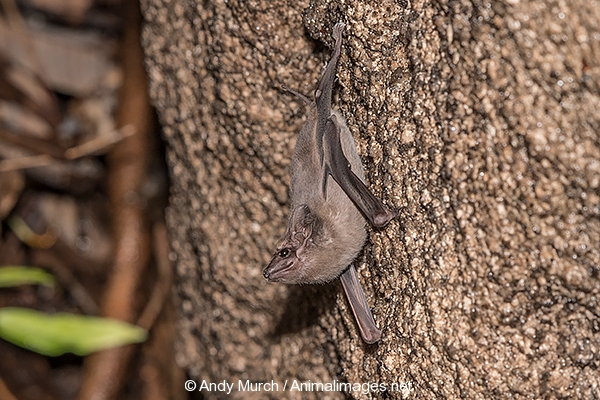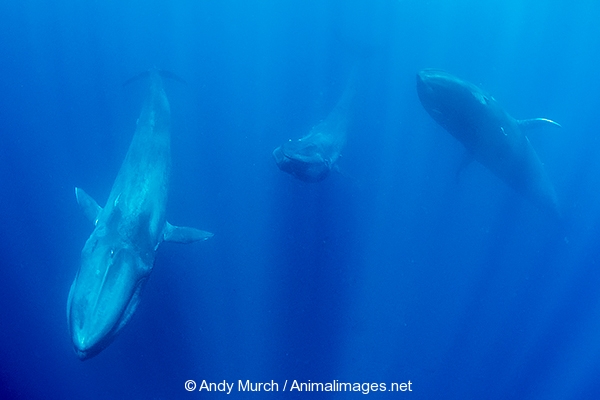MANUEL ANTONIO / QUEPOS AREA, COSTA RICA Duration: 2 Days. April 2-3 2019 Mammals encountered: 14 species Mammals Photographed: 12 species Officially, this was not a mammal photography trip but rather an add-on after a marine expedition looking for the newly described and rarely seen Pacific Nurse Shark. With only two days to chase mammals, I chose to concentrate on two of my favorite…
Animal Images
Uganda and Rwanda Primate Safari 2018 Trip Report
RWANDA & UGANDA PRIMATE SAFARI JULY 2018 TRIP REPORT Trip Duration: July 2-26 2018 Mammals encountered: 42 species Mammals Photographed: 39 species There are no adjectives that can adequately describe the diversity and sheer biomass of animals, or the quality and intensity of the encounters that can be enjoyed in Uganda. Our main focus was primates and we were not disappointed. We encountered…
Sri Lanka Mammal Photography Safari February 2017
Trip Duration: February 27th – March 11th
Mammals encountered: 35 species
Mammals Photographed: 33 species
Highlights: Excellent leopard encounters, hunting jungle cats, a sloth bear and all five Sri Lankan Primates including both species of slender loris and pygmy blue whales underwater!
We knew this was going to be a great week as soon as we were picked up by our expert guide Dulan at the airport. It was around 9pm and we were exhausted from our international flights. We were supposed to go straight to a safari camp bordering Wilpattu National Park; a three hour drive to the west. After introductions, Dulan asked if we wanted to go spotlighting for nocturnal mammals on the way to the camp. We eagerly agreed!
That night we made numerous detours to Dulan’s secret spots. We didn’t reach the camp until the middle of the night but that was fine because on the way we got our first taste of Sri Lanka’s amazing biodiversity including our first jungle cat. It was a little distant for my strobe to light well but it was fascinating watching it work its way through the grassland in search of rodents to eat.

Jungle Cat – Felis Chaus
We also saw a Red Slender Loris feeding on fruit as we walked down an unpaved road surrounded on either side by dense trees. The tiny primate – about 20cm tall – initially hid behind some branches but Dulan started squeaking at it and it soon poked its head out to see what strange creature was making the noise. Over the next few days, Dulan’s bizarre animal call never failed to attract the critters we were after.

Red Slender Loris – Loris tardigradus.
Exhausted, we decided to call it a night. Arriving soon afterwards at the camp, we were pleasantly surprised to see that our tented accommodation wasn’t exactly ‘roughing it’ 🙂

Roughing it at Wilpattu Safari Camp 🙂
Wilpattu National Park
Our second day started with a hike around the edges of the park. As expected, by midmorning there were not a lot of large mammals out and about except distant Elephants within the park boundary.

Sri Lankan Elephant – Elephas maximus maximus.
However, there were some toque macaques in nearby trees and a few foraging grizzled giant squirrels. These are about three times the size of your average North American or European tree squirrel and quite easy to approach.

Grizzled Giant Squirrel – Ratufa macroura.
At noon we went by jeep deep into the park. Wilpattu is a beautiful region with a diverse assortment of animals and bird species.

Wild Water Buffalo in Wilpattu National Park.
Unlike Yala and many other dry zone protected areas, the park is heavily forested. This makes it a little harder to spot wildlife but also means that there is a higher density of animals and birds because the habitat is more pristine.
It didn’t take long for us to locate many of the common fauna including wild boar, Asian elephants, herds of chital (white-spotted deer) and small groups of wild water buffalo. Most Sri Lankan buffalo are feral domestic buffalo – Bubalus bubalis, or a genetic mixture of the two species. However, the buffalo in Wilpattu are almost all genetically pure wild buffalo – Bubalus arnee. You can easily tell the difference by their wide outstretched horns. Their domestic cousin’s horns generally curve upward and inwards.

Wild Water Buffalo – Bubalus arnee.
Although we were concentrating on mammals, there were plenty of reptiles present including mugger crocodiles around the lakes and green and grey vine snakes in the trees and bushes.

Mugger Crocodile – Crocodylus palustris
There were reports of leopard sightings and we found fresh tracks across many of the trails but we left the park around 6pm without seeing Sri Lanka’s largest land predator. After supper we went on an intensive spotlighting trip around the periphery of the park. During that session we found lots of small animals including palm civets, a white-lined chevrotain but the highlight was a Gray Slender Loris that Dulan spotted in a tree on the edge of a chilli pepper field. Keeping a close eye on the undergrowth for snakes, we ventured into the bush for a closer look and the loris obliged very nicely 🙂

Gray Slender Loris – Loris lydekkerianus.
Early the next morning we drove back into the park. After about an hour we picked up the trail of a young male Sri Lankan leopard and waited for him to materialize out of the undergrowth. Eventually he did and we watched him for some time as he loped along the edge of the dense jungle. Eventually he slipped away but not before I had fired off plenty of images.

Sri Lankan Leopard – Panthera pardus kotiya.
Once the leopard was gone we went in search of other species but we got anoher great sighting later in the day. Other than leopards we saw an impressive list of mammals including a few ruddy mongooses, small troops of grey langurs, a handful of flighty Indian muntjac that I couldn’t get a picture of no matter how quickly I tried, numerous sambar deer and a solitary, distant sloth bear – my first but hopefully not my last!

Sloth Bear – Melursus ursinus.

Sri Lankan Ruddy Mongoose – Herpestes smithii zeylanicus.
After a sumptuous lunch of local curry dishes, we left Wilpattu and headed for Sigiriya in the centre of Sri Lanka’s northern dry-zone forests. We were hoping to find fishing cats but sadly we were thwarted by the excessive rains that fell much later than expected. However, while in Sigiriya we found plenty of other animals to keep us busy including Sri Lanka’s fifth and final primate species; the purple faced leaf-eater monkey.

Purple Faced Leaf Monkey – Trachypithecus vetulus.
By day we encountered endless monkeys, elephants, small herds of chital and mongooses. There are four species of mongooses in Sri Lanka. The most common are Ruddy Mongooses but we also saw a mother and baby Indian Grey Mongoose.

Indian Grey Mongoose – Herpestes edwardsii.
Dulan also took us to a couple of remote budist temples and a disused storage shed where we were able to photograph some of Sri Lanka’s many bat species including Schneider’s Leafnosed Bats, Rufous Horseshoe Bats, Black-bearded Tomb Bats and Lesser False Vampire Bats.

Schneider’s Leaf-nosed Bat – Hipposideros speoris.

Black-bearded Tomb Bat – Taphozous melanopogon.

Rufous Horseshoe Bat – Rhinolophus rouxii.

Lesser False Vampire Bat – Megaderma spasma.
By night we scoured the forests and fields around Sigiriya for cats and civets. For the uninitiated, civets are distantly related to cats. They usually live in trees where they hunt for birds, reptiles and small mammals. Dulan thought he saw a few palm civets but the most common and the most striking civets that we found were Small Indian Civets.

Small Indian Civet – Viverricula indica.
While scanning the edges of fields we also picked out numerous Asiatic Long-tailed Climbing Mice precariously perched on the ends of grass stalks gathering seeds.

Asiatic Long-Tailed Climbing Mouse – Vandeleuria oleracea.
Most of the mammals we saw fell under the category of ‘the usual suspects’ for Dulan but he was surprised to see a trio of Pouched Tomb Bats taking a nap on the trunk of a large tree at the side of the road.

Pouched Tomb Bats – Saccolaimus saccolaimus.
On the reptile front, we saw many Bengal land monitors and more vine snakes plus a mildly venomous Forsten’s Cat Snake.

Forsten’s Cat Snake – Boiga forsteni.
By day, there were also numerous turtles in the bush, including Indian Flapshell Turtles and Indian Star Tortoises. It was nice to see that they haven’t all been collected for the pet trade.

Indian Flapshell Turtle & Indian Star Tortoise.
On a regular week long trip we would have gone south after Sigiriya to hunt for some of Sri Lanka’s other endemic mammal species that are confined to wet-zone forests but this year was just a short add on to our Sri Lankan Blue Whale Expedition so after five days we returned to Colombo and went in search of whales. Next year we will run a full length Safari with all of Sri Lanka’s Iconic Mammal Species.
Before we arrived back in Colombo, Dulan had one more treat for us; stopping at the side of the highway he led us to a stand of large trees crammed with hundreds of Indian Flying Foxes.

Indian Flying Fox – Pteropus giganteus.
That night we said our goodbyes to Dulan and headed out to sea. We spent the following five days in the company of Sri Lanka’s abundant Pygmy Blue Whales. This was my third year running blue whale snorkelling trips. Its generally not that easy to get close to fast moving whales but this year proved to be an epic adventure with daily world class blue whale encounters.

Pygmy Blue Whale – Balaenoptera musculus brevicauda.
We also ran into a few pods of shortfin pilot whales and long beak common dolphins but the blue whales dominated the trip. At one point we had a group of three blue whales making pass after pass. The world’s largest whales generally ignore snorkelers but this group took great interest in us for a couple hours – an experience none of us on the trip will ever forget. You can read more about our 2017 blue whale week on Big Fish Expeditions: Blue Whale Trip Report

A little distant but its not easy to get three blue whales in a single frame 🙂
In 2018 we’ll be back in Sri Lanka running another mammal watching safari. Join us there: Sri Lanka Mammal Safari 2018

Andy Murch is an accomplished Marine and Terrestrial Wildlife Photographer and Trip Leader at Big Fish Expeditions.
Mammal Species Seen during the expedition:
Sri Lankan Leopard
Jungle Cat
Small Indian Civet
Ruddy Mongoose
Grey Mongoose
Grizzled Giant Squirrel
Three lined Palm Squirrel
Indian Giant Flying Squirrel (eye shine only)
Asiatic Long-tailed Climbing Mouse
Indian Hare
Roufous Horseshoe Bat
Schneider’s Leaf-nosed Bat
Lesser False Vampire Bat
Indian Flying Fox
Black-bearded Tomb Bat
Pouched Tomb Bat
Purple Faced Leaf Eater Langur
Grey Langur
Toque Macaque
Red Slender Loris
Grey Slender Loris
Indian Muntjac
Chital Deer
Sambar Deer
White-lined Chevrotain
Wild Asian Water Buffalo
Domestic Water Buffalo
Asiatic Elephant
Wild Boar
Eurasian Otter
Sloth Bear
Asian Elephant
Shortfin Pilot Whale
Long-beak Common Dolphin
Pygmy Blue Whale
American National Parks Mammal Photography Road Trip 2016
Trip Duration: September 27th – October 24th. Mammals encountered: 32 species/subspecies Mammals Photographed: 25 species/subspecies This expedition was intended to be a ‘late summer’ wildlife photography trip, just before the snows hit the Rocky Mountains and made travel difficult. We didn’t quite have a snow-free trip but we mostly stayed ahead of the weather as it chased us south. Over the…